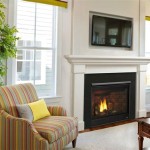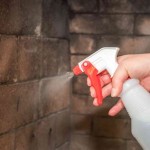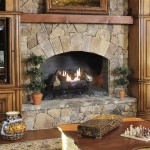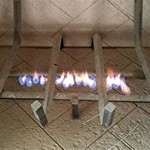Gas Fireplace Pilot Light Won't Go Out: Troubleshooting and Solutions
A gas fireplace offers both aesthetic appeal and supplemental heating. However, a persistent pilot light—one that refuses to extinguish even when the fireplace is not in use—can be a source of concern and potential inefficiency. Understanding the reasons behind this issue and knowing how to troubleshoot it is crucial for maintaining a safe and efficient gas fireplace operation. This article will explore common causes of a pilot light that won't go out, along with potential diagnostic steps and repair strategies.
The pilot light in a gas fireplace serves as a small, continuous flame that ignites the main burner when heat is desired. It operates on a small, independent gas supply. When the fireplace is turned off, the main gas supply is cut off, but the pilot light should typically remain lit, unless specifically designed to be electronically ignited. A pilot light that persistently remains lit despite being instructed to turn off can indicate several underlying problems.
Thermocouple Malfunction
The thermocouple is a safety device crucial to the pilot light system’s operation. It's a small, metal rod positioned directly in the pilot flame. When heated by the pilot flame, the thermocouple generates a minuscule electrical current. This current signals the gas valve to remain open, allowing gas to flow to the pilot light. If the thermocouple is faulty, it may continue to generate a current even when it shouldn't, preventing the gas valve from closing fully.
To diagnose a faulty thermocouple, a multimeter can be used to test its voltage output. A healthy thermocouple should produce a specific voltage reading when exposed to the pilot flame. If the reading is significantly lower than the manufacturer’s specifications, the thermocouple is likely failing and needs replacement. Visual inspection can also sometimes reveal damage like corrosion or physical breakage, which would necessitate replacement.
Replacing a thermocouple is a relatively straightforward process that involves disconnecting the old thermocouple from the gas valve and connecting the new one in its place. It is critically important to ensure the new thermocouple is positioned correctly within the pilot flame for proper operation. If unsure, consulting a qualified technician is recommended.
Dirty or Obstructed Pilot Orifice
The pilot orifice is a small opening that regulates the amount of gas flowing to the pilot light. Over time, this orifice can become clogged with dust, debris, or even carbon deposits. A partially blocked orifice can disrupt the proper gas flow, leading to an erratic or unusually large pilot flame that is difficult to extinguish. In some cases, it might provide enough heat feedback to the thermocouple to keep the gas valve open even when the fireplace is “off.”
Cleaning the pilot orifice requires careful attention to detail. First, the gas supply to the fireplace must be completely shut off. Then, the pilot assembly needs to be carefully disassembled to access the orifice. A specialized pilot orifice cleaning tool, or a thin wire, can be used to gently clear any obstructions from the orifice. Avoid using anything too abrasive that could damage the delicate opening. Blow compressed air through the orifice to ensure it is completely clear.
After cleaning, reassemble the pilot assembly and carefully turn the gas supply back on. Observe the pilot flame. It should be a steady, blue flame. If the flame is still erratic or unusually large, the orifice may be damaged and need replacement.
Faulty Gas Valve
The gas valve controls the flow of gas to both the pilot light and the main burner. If the gas valve is malfunctioning internally, it might not be fully closing off the gas supply to the pilot light, even when the fireplace is turned off. This could be due to a sticking plunger, a damaged internal seal, or a malfunctioning solenoid.
Diagnosing a faulty gas valve often requires the expertise of a qualified technician. It's essential to ensure that all other potential causes, such as a faulty thermocouple or a dirty pilot orifice, have been ruled out before suspecting the gas valve. A technician can use specialized tools to test the gas valve’s functionality and identify any internal failures.
Replacing a gas valve is a complex and potentially dangerous procedure that should only be performed by a licensed professional. It involves disconnecting the gas lines, removing the old valve, and installing the new valve, ensuring all connections are properly sealed to prevent gas leaks. Improper installation can lead to hazardous situations, so it's crucial to rely on professional expertise.
Beyond these key points, other potential, though less common, reasons for a pilot light refusing to extinguish include issues with the millivolt system, wiring problems (especially in fireplaces with electronic ignition), and even drafts affecting the pilot flame's behavior. Addressing these possibilities usually requires a systematic approach to eliminate potential causes one by one. Regular maintenance, including professional inspection and cleaning, can also prevent many of these issues from arising in the first place, ensuring safe and efficient operation of the gas fireplace.

Gas Fireplace Won T Stay Lit Magic Touch Mechanical
My Gas Fireplace Pilot Light Works Perfectly However When I Flip The Switch For Rest Of To Turn On Nothing Happens What Quora

Gas Fireplace Pilot Light Won T Stay Lit Easy Fix

Gas Fireplace Won T Stay Lit Magic Touch Mechanical

Gas Fireplace Keeps Shutting Off Here S What You Can Do

Why Your Pilot Light Keeps Going Out How To Fix With S

How To Fix A Gas Fireplace Pilot Light That Does Not Stay Lit Troubleshooting And Repairing

Gas Fireplace Keeps Shutting Off Here S What You Can Do
Is It Okay If My Pilot Light Therma Coupler Red Hot When Having The On A Gas Fireplace Quora

How To Fix A Low Or Weak Pilot Light
Related Posts








